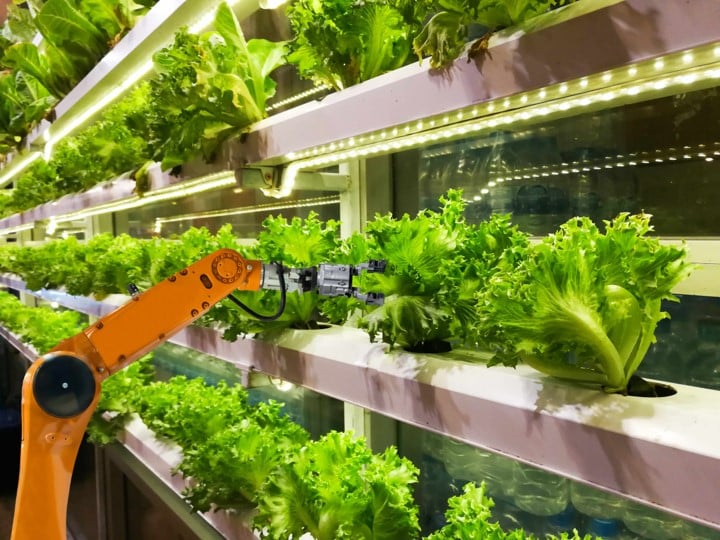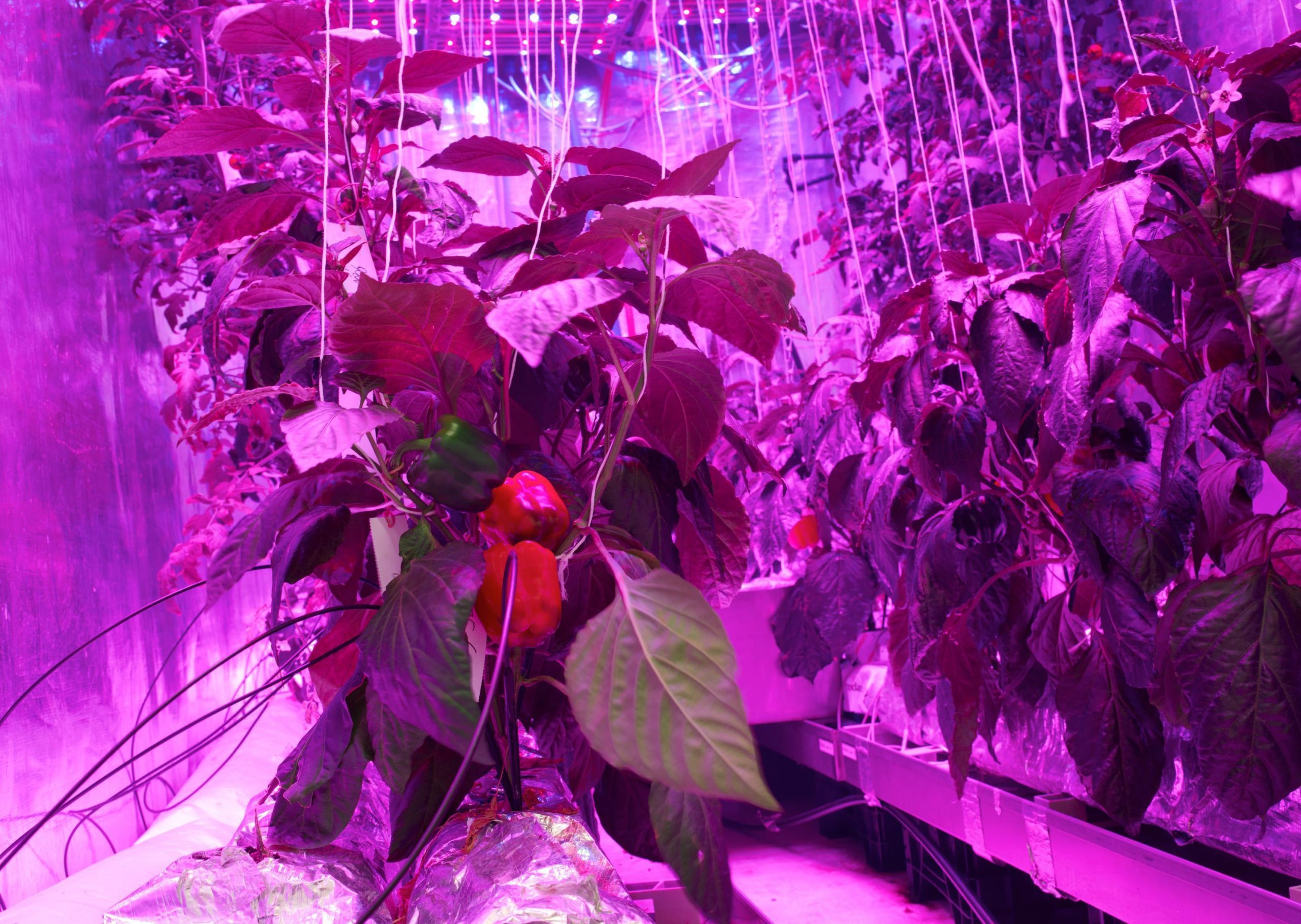
If the stories are to be believed, we now have the solution for feeding the world’s growing population: vertical farming, urban farming, or plant factories. These are all terms that promise systems whereby we can produce enough food, safely and without any difficulty. All of which also happens just around the corner from the consumer.
Investors are scrambling over each other for the opportunity to invest. One start-up after the other is presenting itself and claiming that it can do it all in an even smarter way. With a background as a researcher in greenhouse agriculture and as a software engineer and R&D manager at a company that develops climate computers, I am continually astonished by the often one-sided stories!
Terminology
However, before we go any further, there is the question of what we are really talking about. CEA, vertical farms, urban farming, plant factories, daylight-free cultivation – these are terms that are often used indiscriminately. In fact, I myself can no longer see the wood for the trees. One term which has been bandied about a lot over the past two years is CEA, controlled environment agriculture. The emphasis here is on the fact that (part of) the growing environment is ‘controlled’. Examples include cultivation under a plastic roof or in plastic or glass greenhouses. Cultivation in an environment without natural sunlight is also classified as CEA.
The term vertical farming is also widely used. This involves growing crops in multiple layers. This could be in a ‘plant lab’ without natural light using multi-layer cultivation on different ‘shelves’ on top of each other. But growing crops in vertical ‘towers’ inside a glass greenhouse or on a roof in a mega-city is also called vertical farming.
Social components
Then there is urban farming or city farming. Cultivation systems such as these are often located in or close to the city. It could be a greenhouse on the roof of a building, a disused factory, or even an old subway tunnel. In the case of urban or city farming, there is sometimes a social component in addition to growing crops. This could be, for example, offering work to people who are distanced from the labor market. Or a way to help children learn about how food is grown.
Lots of different systems with often very different goals! The fact that the same term is also used for different cultivation systems does not help to understand it all. In this piece, I use the term vertical farming for growing crops in systems without daylight.

Difference between crops
It also makes quite a difference what kind of crops you grow. Then it is specifically about how much of the product you eat, or how you use in some other way. When it comes to lettuce and herbs, you will in most cases eat the whole product, although maybe not the roots. If you grow tomatoes, then things are already different. Most of the crop is made up of stems and leaves. Yet that’s not what you eat. Tomatoes are only a small part of the large amount of vegetation that is grown. Yet you need light, nutrition and water for this part of the crop as well. This is evident in the different amounts of water and energy required per kilogram of product that you actually use.
It is already possible to grow tomatoes without daylight. Tomatoes are not grown in multiple layers but rather using the vertical growing method, as is commonplace in high-tech glass greenhouses. For new growing methods in vertical farms, however, growers are already developing plants that are much smaller and are only harvested once.
Energy
An important difference between growing crops in glass greenhouses and vertical farms is the amount of energy that is needed for their cultivation. With a traditional glass greenhouse, a lot of sunlight streams in which provides both for assimilation lighting and heat in the greenhouse. Depending on the type of greenhouse and crop and the place in the world where the greenhouse is located, at certain times of the year or of the day, shading, lighting, dehumidification, misting, cooling or heating needs to be done. These are all things that consume energy.
Also, in these types of systems you have to ensure that you maintain the right levels of humidity and temperature. This means that just like in a greenhouse, sometimes you have to mist and sometimes you have to dehumidify. Apart from that, a lot of high intensity lamps hang there.

Pink elephant
Now let’s talk about that pink elephant in the room. In stories about vertical farming, figures on energy consumption are often ‘forgotten’. There are more layers, therefore higher yields. The crop is grown close to the consumer with a minimum of water and there are purportedly no diseases or pests in a vertical farm. More about that last point later.
Joint research by TU Delft and WUR carried out in 2018 revealed higher levels of energy efficiency when growing lettuce in a plant factory than in a Swedish greenhouse with lighting (1411 MJ kg-1 dry weight versus 1699 MJ kg-1). In addition, there was a higher yield per volume of water, CO2 and ground surface area.
However, if readily available solar energy were to be considered, then the story would be different. Per kilogram of dry weight, 247kWh was needed in a plant factory and 70kWh in a traditional greenhouse in the Netherlands. This applied to lettuce, a crop that is eaten almost in its entirety. But what would the level of consumption look like when it comes to tomatoes? Present-day plants are not yet suitable for multilayer cultivation. And the majority of the dry matter or plant produced is ‘waste’.
Diseases and pests
Publications on vertical farming often state that crop protection does not have to be applied and that organic cultivation is achievable. Although vertical farming involves ‘closed’ systems, new material is brought into the system each time. So, each time plants, seeds or growing materials are brought into the growing space, diseases or pests can be introduced along with them.
In addition – and perhaps even more so than in a greenhouse – diseases can spread very quickly owing to the large amount of plant material in close proximity to each other. Monoculture -just like in modern greenhouses, by the way- does not help here either. According to research that was conducted in 2020 in the UK, the risk of diseases and pests occurring in vertical farms has been underestimated. More research is needed into how diseases and pests in vertical farming can best be prevented or controlled.
Organic crops, incidentally, are only recognized as such in Europe if they are actually grown in soil. According to the guidelines, a system with organic crop protection, a medium for cultivation, fertilizers and plants cannot be labelled organic unless cultivation takes place in the open air, no matter how sustainable the system is. As it happens, this does not apply in the US. Over there, it is possible to grow “organic” crops even if they are not outdoors in actual ground.
When is it?
When you look at the above, it is by no means the case that there are no good reasons for not making use of vertical farming. One example is a processor of chopped lettuce salad mix who likes to have exactly the same type of lettuce leaves in their bags all year round. With lettuce grown in greenhouses or in the open air, a little soil may end up in the harvested product. For the rest, he always wants to keep the same schedule. Sowing, x days of growing and after y days of harvesting.
When crops are grown in a greenhouse, the growing season will be shorter due to more sunlight in the summer while in winter, it will be slightly longer. Also, the color of the leaves may be slightly darker or lighter during certain periods depending on the temperature. In a regulated process such as that for bagged lettuce, the extra costs for a vertical farm are more easily recouped by a uniform and predictable product. What’s more, lettuce can also grow extremely well in layers.
Different buds
Another use is cultivation for research or to very specifically control the contents of plants. In a greenhouse, variation in sunlight makes it more difficult to precisely control all the parameters for growing. Vertical farming can also be a good solution in places where it is very hot (like the desert in the UAE) or very cold (northern Canada in winter) if you still want to be able to grow fresh food there.
But it can also be a good method in places where energy is ‘free’, such as Iceland. For now, it’s always about leafy plants or herbs that are easy to grow in layers. I also enjoy eating a tomato or cucumber from time to time….
In short, there are definitely use cases for vertical farming, but let’s stop using vertical farming as the solution to the world food problem and start talking about the pink elephant in the room …. For a better and fairer distribution of food, we will have to adjust several parameters. Think about how important it is to eat more plant-based food, calculate fair and true prices for products and, also in our modern glasshouses, think about changing our growing methods to make them even more sustainable.
About this column:
In a weekly column, alternately written by Eveline van Zeeland, Derek Jan Fikkers, Eugène Franken, PG Kroeger, Katleen Gabriels, Carina Weijma, Bernd Maier-Leppla, Willemijn Brouwer and Colinda de Beer, Innovation Origins tries to figure out what the future will look like. These columnists, sometimes joined by guest bloggers, are all working in their own way to find solutions to the problems of our time. So tomorrow will be good. Here are all the previous columns in this series.

